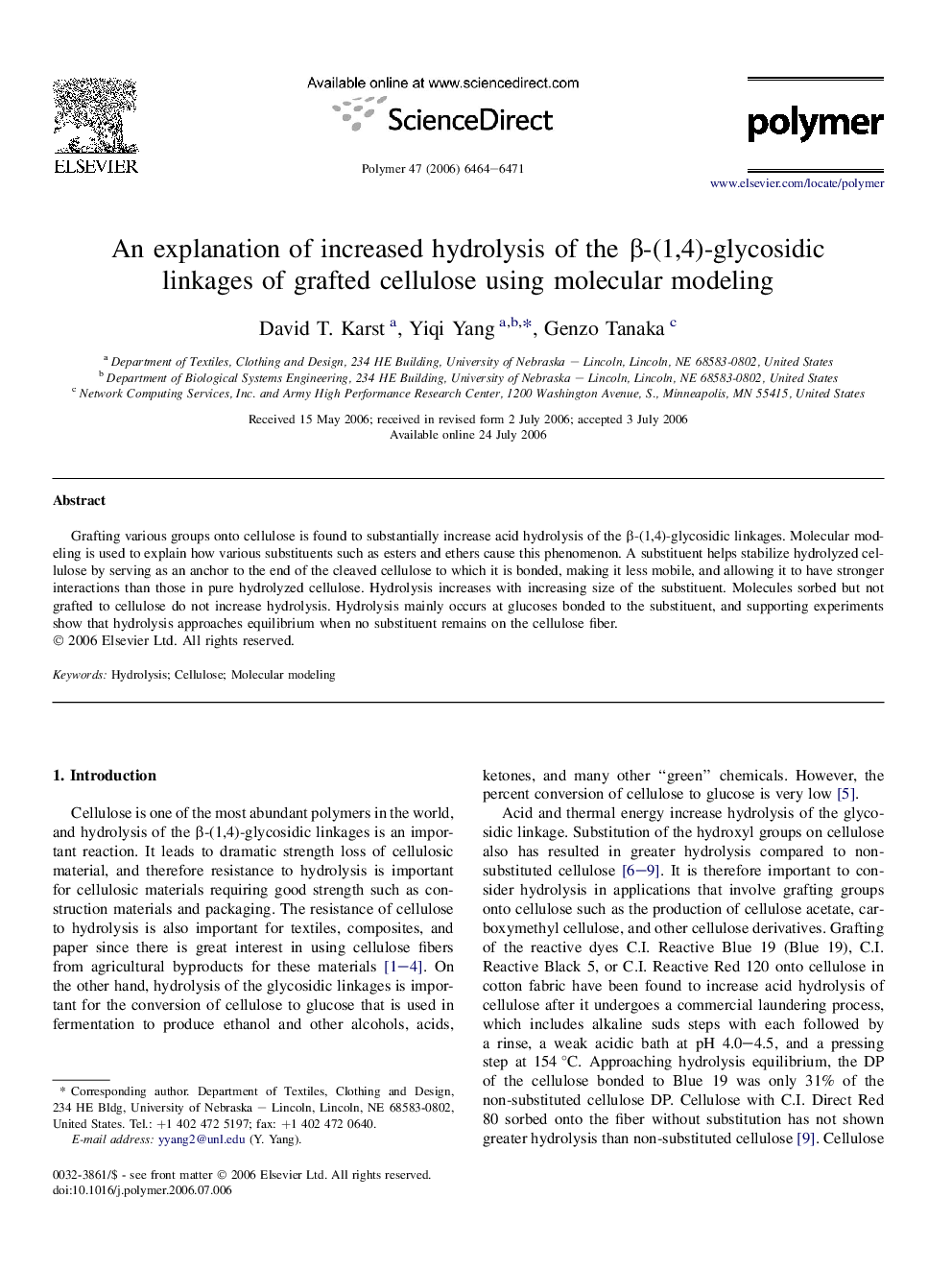| Article ID | Journal | Published Year | Pages | File Type |
|---|---|---|---|---|
| 5186922 | Polymer | 2006 | 8 Pages |
Abstract
Grafting various groups onto cellulose is found to substantially increase acid hydrolysis of the β-(1,4)-glycosidic linkages. Molecular modeling is used to explain how various substituents such as esters and ethers cause this phenomenon. A substituent helps stabilize hydrolyzed cellulose by serving as an anchor to the end of the cleaved cellulose to which it is bonded, making it less mobile, and allowing it to have stronger interactions than those in pure hydrolyzed cellulose. Hydrolysis increases with increasing size of the substituent. Molecules sorbed but not grafted to cellulose do not increase hydrolysis. Hydrolysis mainly occurs at glucoses bonded to the substituent, and supporting experiments show that hydrolysis approaches equilibrium when no substituent remains on the cellulose fiber.
Related Topics
Physical Sciences and Engineering
Chemistry
Organic Chemistry
Authors
David T. Karst, Yiqi Yang, Genzo Tanaka,
